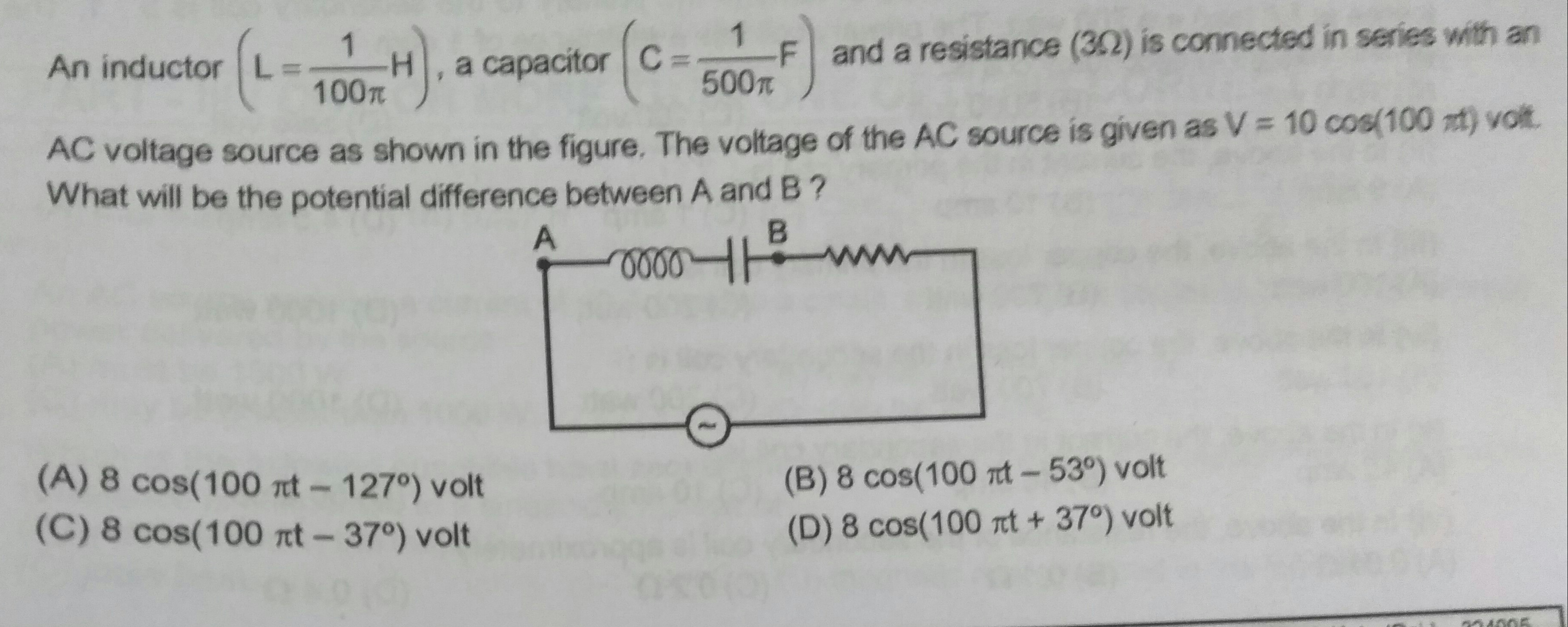We provide steps to the solution especially for JEE students.
Please follow the below steps:
- Potential difference between AB means the potential difference between the inductor and the capacitor is to be calculated.
i.e (V L + VC)
- Applying kirchoff's voltage law,
- Source voltage = voltage across (resistance + capacitor + inductor)
- The instantaneous voltage across a pure resistor, VR is “in-phase” with current.
- The instantaneous voltage across a pure inductor, VL “leads” the current by 90 degree.
- Therefore, VL and VC are 180o “out-of-phase” and in opposition to each other.
- 1
- 2
- 3
- 4
- 5
- 6
- 7
- 8
- 9
- 10
You have rated this answer /10
Browse free questions and answers by Chapters
- 1 Thermodynamics
- 2 Gravitation
- 3 Electromagnetic Waves
- 4 Communication Systems
- 5 Laws of Motion
- 6 Current Electricity
- 7 Work, Energy and Power
- 8 Kinematics
- 9 Physics and Measurement
- 10 Rotational Motion
- 11 Properties of Solids and Liquids
- 12 Kinetic Theory of Gases
- 13 Oscillations and Waves
- 14 Electrostatics
- 15 Magnetic Effects of Current and Magnetism
- 16 Electromagnetic Induction and Alternating Currents
- 17 Optics
- 18 Dual Nature of Matter and Radiation
- 19 Atoms and Nuclei
- 20 Electronic Devices

